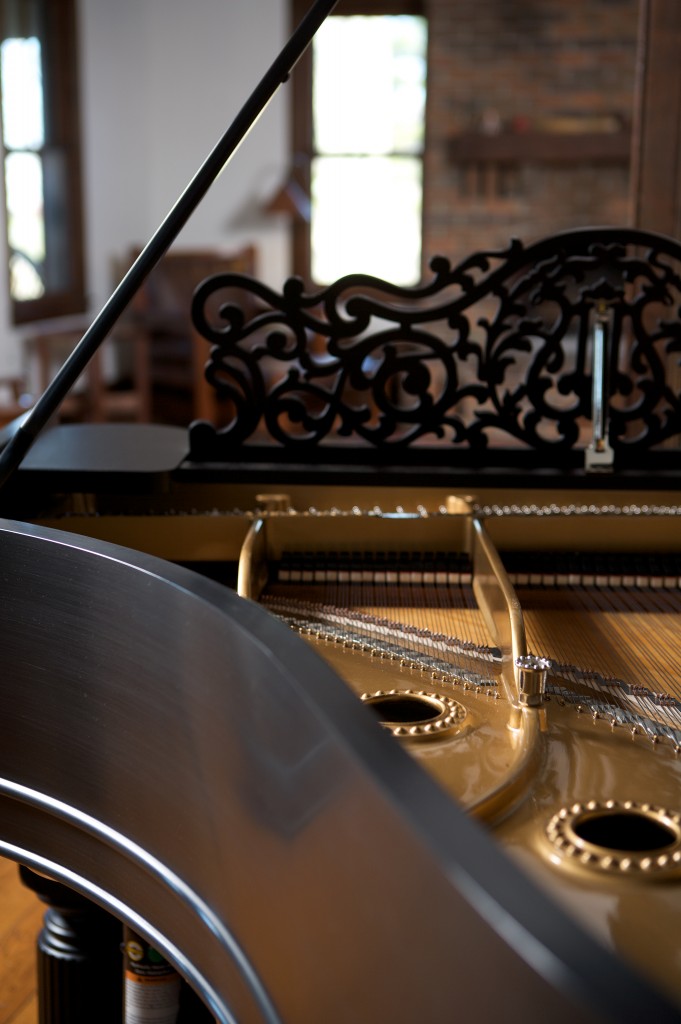Memorization
- Marlene
- Blog, flute, Uncategorized
- 1 Comment
Memorization
What do marching bands, music competitions, and playing classical music in the dark have in common? Memorization.
Performing musicians are asked to memorize music from time to time. Memorization is often required for competitions and is useful for making a piece more musical. While memorization may seem difficult at first, with practice it becomes easier. And there are some advantages to memorization: when we are free of the dots on the page, we can listen more carefully and respond more musically.
Cognitive scientists have long understood the necessity of memorization in the learning process. In 1917, Arthur I. Gates embarked on a project to find out the right ratio between study (reading from a book) and memorization. [“Recitation As a Factor In Memorizing”] Gates found that 1/3 study and 2/3 recitation from memory is optimal. What does this mean for musicians? If you’re trying to memorize something, play it while looking at the page once and try it from memory twice.
My students, especially the ones in marching band, ask for help memorizing music. Different skills are useful in different contexts. Because marching band is the most common need for memory with my flute students, we will consider how different memory skills are best suited to the music in the pregame show (“Star Spangled Banner,” the fight song, and the alma mater.)
There are THREE types of musical memory:
- finger memory
- aural memory
- visual memory
Let’s consider each one in greater detail.
FINGER MEMORY
I am able to play my high school fight song, even though I graduated 20 years ago. I can pick up my flute and without even thinking about it, my fingers will begin going through the motions. I’ve probably played the fight song thousands of times during football games, basketball games, and band practice. The patterns are drilled into my fingers forever. Finger memory is a physical memory and it requires little conscious effort. This kind of memory is embedded in the mind through many repetitions. If properly strengthened, finger memory can be very reliable, especially in stressful situations. Finger memory is learned through playing the piece many, many times.
AURAL MEMORY
Grab your instrument and play “Twinkle Twinkle Little Star” starting on the note F. After a couple of tries, you were probably able to play it pretty well. “Twinkle” is a tune that most people know how to sing. When you worked out the song by ear on your instrument, you heard it in your head then matched the pitches to the sound coming out of your instrument. You may have had to move up or down pitches until you found the right one, but it was easier on the second try. Aural memory is useful when finger memory fails and we need to get back on track. This type of memory is especially useful when playing “The Star Spangled Banner,” which has a lot of tricky intervals. If your finger memory fails, you can use your ear to guide you to the right note and you’ll be back on track quickly.
VISUAL MEMORY
You don’t need to have a photographic memory to use the skill of visual memory to aid in learning a piece of music. The tune for my high school’s Alma Mater was a bit unusual. I never learned the words. But it was mercifully short. If I close my eyes, I can still imagine what the printed sheet music looked like: the typeface of the title, the layout of the staves, and the starting notes. The visual memory is so strong that even now, I can still read parts of the music by bringing up the image. Visual memory is critical for memorizing difficult transitions, changes, or anything that is unusual. Take a mental picture of the music and read the notes from the inside of your eyelids! This type of memory can be very strong, but it can’t be used for long pieces of music. It’s most helpful for small sections.
By understanding and carefully using all three types of memory, you are less likely to forget. It’s not wise to rely on one type of memory. Rather, it’s best to have “memory redundancies” by using two or three strategies at all times. Pay special attention to the form of the music. Repeats are like freebies because once the memory is stored, it can be recalled easily a second or third time. Add an additional memory strategy in places where the music changes or becomes difficult.
Memories get stronger with use so keep testing your memory in regular intervals. You will find that the more you play from memory, the easier it will become. The neurons need time to both encode the memories and retrieve them so don’t hurry the process. When music needs to be memorized, start early and test your memory often.
But here’s the good news: your brain has an incredible amount of memory available. In the book How We Learn, Benedict Carey offers some encouragement.
“Everything we have deliberately committed to memory–the multiplication table, a childhood phone number, the combination to our first locker–is all there are for good. …(There) is more than enough (memory capacity in our brains) to record every second of a long life, cradle to grave. Volume is not an issue.” (pp. 36-37)
To learn more about the science of the brain and music, please check out my other blog posts: Brain Imaging On Musicians, How We Learn book review, The Musician’s Brain.

1 comment